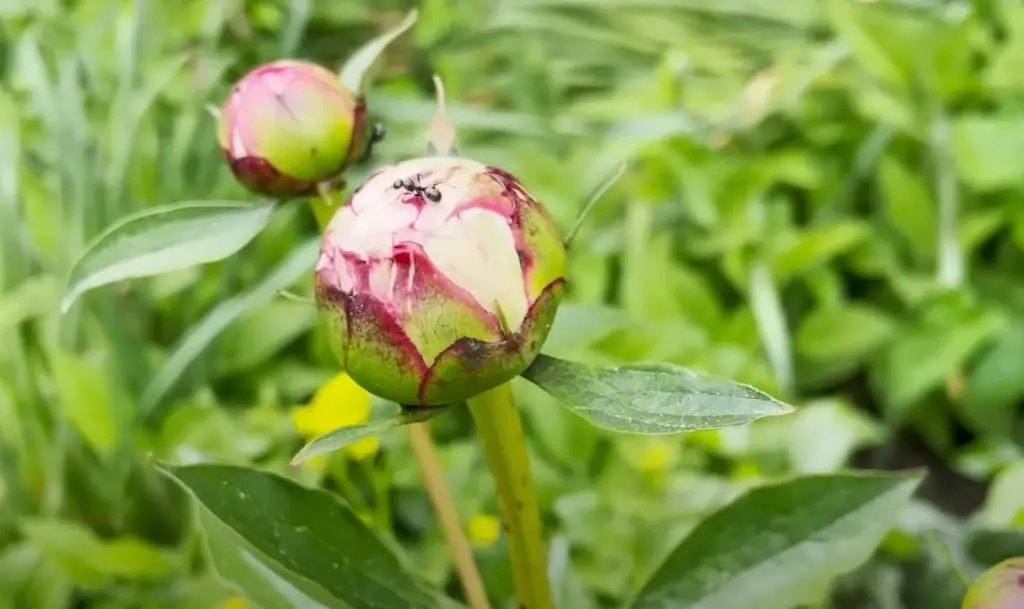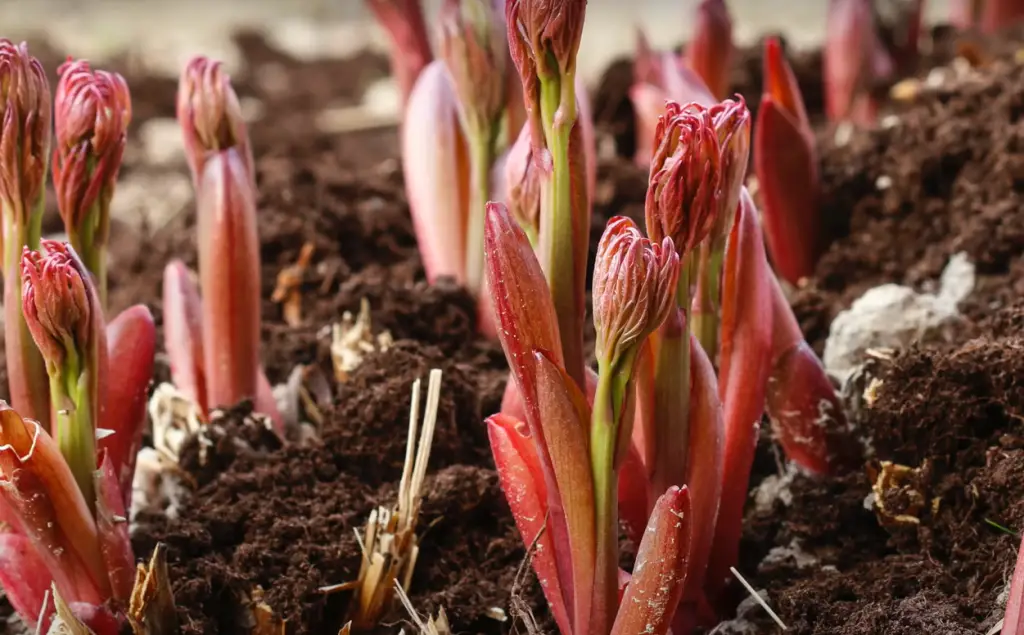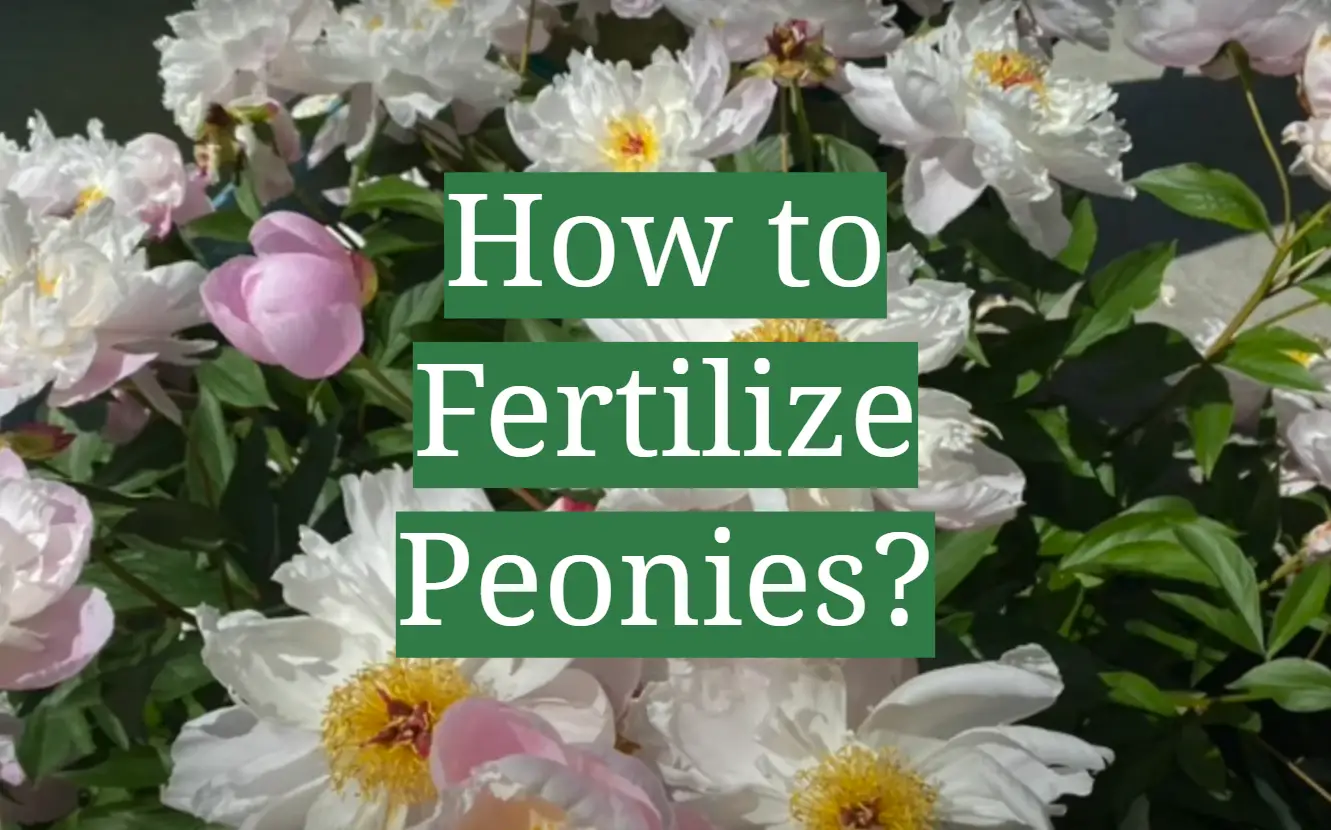Do you prize peonies for their fragrant beauty and delicate petals? If so, then maintaining a healthy bloom cycle is essential to keeping your potted or garden peony plants looking picture perfect. But did you know that fertilizing regularly can help your blooms reach their fullest potential? Follow along and learn how to properly fertilize peonies to bring out the best in these charming plant additions! With just a bit of knowledge on the type of fertilizer needed, frequency of applications, and even prepping the soil right before planting – you’ll have gorgeous springtime flowers year after year!
What Is the Best Time to Fertilize Peonies?
The best time to fertilize peonies is in the fall, just after their foliage has died off. This allows the plant to absorb the fertilizer over winter and be ready for vigorous growth in spring. Fertilizing again in early spring (just as shoots emerge from the soil) will also help promote better flowering during bloom season. Specific fertilizer amounts and timing can vary based on your specific climate, so it’s a good idea to check with your local nursery or garden center for more information specific to your area. When applying fertilizer, make sure to keep an eye out for signs of leaf burn or other damage that could occur if you’re applying too much fertilizer.

In addition to regular fertilization, peonies may benefit from a light application of compost or manure in the spring. To do this, rake back the mulch or soil and apply a 1-2 inch layer of compost or manure to the area around the plants. Pat down lightly to spread out evenly, but avoid piling it up against the stems or foliage. Compost should be applied before new growth begins in spring and can help peonies recover from winter dormancy, as well as promote healthy flowering.
How To Choose The Right Fertilizer For Your Peony Plants?
If you want to ensure that your peony plants are healthy and thriving, then choosing the right fertilizer is essential. There are many different types of fertilizers available on the market, and it can be difficult to know which one is best for your particular plants. Here are a few tips to help you choose the right fertilizer:
- Select a balanced fertilizer with an N-P-K ratio of 10-10-10 or similar. A balanced fertilizer contains equal parts nitrogen (N), phosphorus (P), and potassium (K). These three elements provide key nutrients necessary for healthy growth. [1]
- Choose a slow-release organic fertilizer that will slowly release its nutrients into the soil over time, rather than quickly. This will help you maintain a steady level of nutrient application and reduce the need for frequent fertilizing.
- Be sure to check the label for application rates and adjust accordingly based on the needs of your particular plants. It is important not to over-fertilize, as this can damage or even kill your peony plants.
- Make sure that the fertilizer is suitable for peonies specifically, as some fertilizers may not be designed with these specific plants in mind. The label should indicate whether it is suitable for use on peonies or other flowering plants.
By following these simple tips, you can ensure that your peony plants receive the right fertilizer and remain healthy and vibrant all season long. With proper care and attention, peonies can be a beautiful addition to any garden!
When and How Often Should You Fertilize Peonies?
Fertilizing peonies is an important part of their care and helps ensure they get the nutrients they need for abundant blooms. The best time to fertilize peonies is in early spring, just before new growth begins to emerge. Wait until after any chance of frost has passed and all the snow is gone. When applying fertilizer, use a balanced formula with equal parts nitrogen (N), phosphorus (P) and potassium (K). This type of fertilizer will provide your peony plants with all the essential nutrients needed for optimal growing conditions.
You can apply a light application of fertilizer at this time and then a heavier application 4-6 weeks later to encourage additional flower buds.
After the buds set in mid-spring, you don’t need to apply any additional fertilizer until the following spring. [2]
If your peonies are not blooming well or if they seem to lack vigor, a light application of fertilizer may help them in late summer. Apply a balanced formula with equal parts nitrogen (N), phosphorus (P) and potassium (K). This will help encourage root growth and provide nutrition for healthy foliage during the fall months. Keep in mind that too much nitrogen can lead to excess leafy growth at the expense of flowers so apply sparingly.
Organic or Synthetic Fertilizers for Peonies – Which Is Better?
When it comes to fertilizing peonies, you may be wondering which type of fertilizer is better: organic or synthetic? Both have their advantages and disadvantages.
Organic fertilizers are derived from natural sources such as animal manure, compost, bone meal, seaweed extract and other plant-based materials. They tend to release nutrients slowly over time so plants can absorb them more efficiently. Organic fertilizers also add valuable trace elements to the soil that help promote healthy root growth and flowering. The downside is that these types of fertilizers are often expensive and may not be available in all areas.
Synthetic fertilizers are made up of chemicals that provide a quick boost of nitrogen, phosphorus and potassium – the primary components of most fertilizers. These nutrients are quickly absorbed by the plants, which can lead to rapid growth and flower production. The downside of synthetic fertilizers is that they can be harmful to the environment if not used properly. They can also burn or damage roots if applied too heavily.
When deciding between organic or synthetic fertilizers for your peonies, consider the advantages and disadvantages of each and choose one that best meets your needs. Both have their benefits and drawbacks, so it’s important to do some research before making a decision. Also remember that regardless of which fertilizer you use, proper application is key to getting the best results with your plants.
What Are the Benefits of Properly Fertilizing Peony Plants?
Fertilizing peony plants is an important part of their care and maintenance. Proper fertilization provides a number of benefits, including enhanced production of blooms, better resistance to disease and pests, improved overall health, and increased plant vigor. Additionally, properly fertilized peonies will be more tolerant of drought conditions and won’t require as much water during dry spells. With the right fertilizer program in place, your peony plants will produce beautiful blooms year after year with minimal effort on your part. [3]

Regularly feeding your peonies will ensure that they have enough nutrients to remain healthy throughout the growing season. Peony plants need nitrogen for strong foliage growth; phosphorus helps promote vigorous flowers; and potassium encourages deep root growth and better drought tolerance. You can purchase a complete fertilizer designed specifically for peonies, or you can choose to use only nitrogen or a balanced blend of all three. Either way, it is important to be aware of the fertilizer’s ratio so that you apply the correct amount relative to the soil type.
This ensures that your plants receive a steady supply of essential nutrients throughout the growing season without causing any damage due to excessive amounts being applied at once. Also, avoid applying too much fertilizer as this will cause root burn and other complications.Lastly, remember to keep the fertilizer away from the flowers and foliage of your peony plants. Fertilizer should only be applied directly to the soil around the plant’s roots as directed on the product label. Applying fertilizer on leaves or flowers can cause severe burning and discolouration, so always take care when using a fertilizer near your peonies.
Applying Granular Fertilizers To Peonies
Applying granular fertilizer to peonies is a simple process that ensures the plants get the nutrients they need for healthy growth. Before applying, it’s important to understand what type of fertilizer will best suit your specific peony variety as well as how much and when to apply it.
First, select a balanced fertilizer specifically formulated for flowering plants such as peonies. If you cannot find one specifically designed for flowers, make sure it has a balanced ratio of nitrogen, phosphorus and potassium (N-P-K). A good rule of thumb is to use a fertilizer with an N-P-K ratio around 5-10-5 or 10-10-10.
Once you have selected the right kind of fertilizer for your peonies, it’s time to apply. Spread the granules across the soil surface and water immediately after application. This will help activate the fertilizer and mobilize the nutrients so that the plant can uptake them more readily. It is best to fertilize in early spring when buds are beginning to swell, but you may also do this once again at mid-season as well.

Finally, always remember to follow package instructions carefully regarding how much fertilizer to use per plant or square foot of garden space. Too much fertilizer can burn roots and negatively impact growth which is why it is important not to overdo it! Following these tips on fertilizing peonies should ensure they thrive and bring a beautiful bounty of blooms each year! [4]
Foliar Feeding With Liquid Fertilizers On Peony Plants
Foliar feeding with liquid fertilizers is an effective way to supplement the nutrition of peonies. The nutrients in liquid fertilizers are readily absorbed through a plant’s leaves, providing an immediate boost and helping it grow stronger and more vibrant. When applying, make sure the fertilizer is applied evenly over the entire surface of the foliage and that it does not drip or run onto other plants. To maximize its effectiveness, water-soluble fertilizers should be applied every two weeks during the growing season. Use a low strength solution when foliar feeding on mature plants; high strength solutions can damage older growth and reduce blooming potential.
Finally, keep in mind that foliar feeding will not replace a soil application; it is simply an extra boost of nutrients.When fertilizing peonies with liquid fertilizer, be sure to follow all label instructions and safety precautions carefully. Over Fertilizing can lead to burn damage on the foliage and roots, so be sure to apply the appropriate amount for your particular plant’s needs. For optimal results, use caution when applying liquid fertilizers – too little won’t provide any benefit, but too much may cause harm. With proper care and regular fertilization, your peony plants should reward you with beautiful blooms for many years to come!
Common Problems That Result From Improperly Fertilized Peonies
When fertilizing peonies, it’s important to follow the directions and use only the recommended amount of fertilizer. Too much or too little can lead to several common problems.
One of the most common issues associated with improper fertilization is leggy growth in the plants. When a peony gets too much nitrogen, this causes an overabundance of leafy foliage and not enough blooms. It also can make the plant more susceptible to disease as well as leading to weaker stems that are prone to breakage.

Another problem caused by incorrect fertilization is stunted root development. Without proper nutrition from the soil, roots won’t be able to grow adequately and this will stunt overall plant growth and flowering capabilities.
Finally, failing to use the right fertilizer for your peonies can cause nutrient deficiencies. When plants are not getting all the necessary nutrients from their environment, they become weak and vulnerable to pests and disease. If left unchecked, this can lead to plant death.
By following directions and using the correct amount of fertilizer when fertilizing peonies, these
common problems should be avoided. With proper care and attention, you can ensure that your peonies will flourish! [5]
FAQ
What is the best fertilizer for peonies?
The best fertilizer for peonies is a balanced, slow-release fertilizer with an NPK ratio of 10-10-10 or one that provides equal parts nitrogen, phosphorus and potassium. It should also contain trace elements like iron and zinc. The best time to fertilize peonies is in the early spring before they start actively growing. Apply 1/4 cup for every square foot of garden soil around the base of your plant. Water thoroughly after application and repeat 2-3 times during the season at 6 week intervals.
How often do I need to fertilize my peony?
You should fertilize your peony 2-3 times during its active growth period, which usually falls between March and August. Each application should be spaced 6 weeks apart and you should use 1/4 cup of fertilizer per square foot of garden soil.
Is it necessary to fertilize my peony every year?
Yes, fertilizing your peony every year is important for its health and overall growth. Peonies need balanced nutrients to grow strong, healthy flowers and foliage. Fertilizer helps provide these essential nutrients. It’s best to apply fertilizer in late winter or early spring when the plants are just beginning to emerge from dormancy and buds are forming. Use a slow-release fertilizer that is labeled for use on flowering plants, such as an organic fertilizer or a 10-10-10 formula. Follow the package instructions for application rates and frequency of applications. Avoid over fertilizing, as this can lead to excessive foliage growth with fewer flowers produced. Mulching around your peony after applying fertilizer will help retain moisture and keep weeds from competing with your plants for nutrients. With regular fertilizing, you can ensure that your peony will produce beautiful blooms every year.
Are coffee grounds good fertilizer for peonies?
Coffee grounds are a great source of nitrogen, which is an important nutrient for peony growth. Coffee grounds can be mixed into the soil around your peonies at any time of year. It’s best to mix them in with other organic material, such as compost or aged manure, to provide a balanced fertilizer. Be sure not to over fertilize your plants; apply only one inch of coffee grounds per square foot and spread it out evenly around the base of the plant. Additionally, avoid using fresh coffee grounds, as they may contain more acid than necessary and could harm your plants. For optimal results, use aged coffee grounds that have been composted before applying them to your garden beds.
What is the best fertilizer for roses and peonies?
The best fertilizer for peonies and roses is one that has a balanced ratio of nitrogen, phosphorus, and potassium (N-P-K), in addition to trace elements like iron and magnesium. A good general-purpose fertilizer for these types of plants is a 10-10-10 formula, which supplies equal amounts of the three main nutrients. You can also use an organic fertilizer specifically formulated for roses or peonies if you prefer. For established plants, fertilize with 1/2 cup of either type of fertilizer applied around each plant once every four weeks during the growing season from spring through fall. If your soil lacks important nutrients such as phosphorus or potassium, you can apply a 2:1:1 ratio (such as 8-4-4 or 6-3-3) fertilizer in the same manner. For younger plants, a 1/4 cup of fertilizer once every two weeks is recommended. As always, be sure to read and follow the application instructions on the fertilizer package carefully before use. Adding compost or aged manure to your soil each year will also help maintain fertility and promote healthy growth for roses and peonies. Finally, make sure that you water your roses and peonies deeply after fertilizing to ensure that the nutrients reach their root systems.
Useful Video: Fertilizing Peonies
Conclusion
Using the right kind of fertilizer at the right time is essential to ensuring healthy growth and a beautiful bloom for your peonies. Use a slow-release fertilizer in early spring when new shoots appear, and then switch to liquid fertilizer when buds start to form. Maintain regular fertilization throughout the summer, until late autumn. Keep in mind that peonies are relatively low maintenance plants so don’t overdo it with too much fertilizer or you could damage their roots. With these tips in mind, you can enjoy vibrant blooms and lush foliage all season long!
References:
- https://plantaddicts.com/fertilizing-peonies/
- https://www.gardeningknowhow.com/ornamental/flowers/peony/how-to-fertilize-peonies.htm
- https://savvygardening.com/fertilizing-peonies/
- https://www.homesandgardens.com/gardens/when-to-fertilize-peonies
- https://www.gardenerbasics.com/blog/fertilizing-peonies










Leave a Reply
View Comments